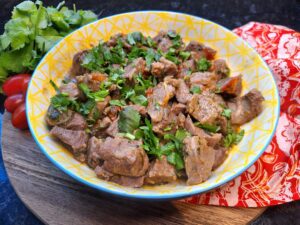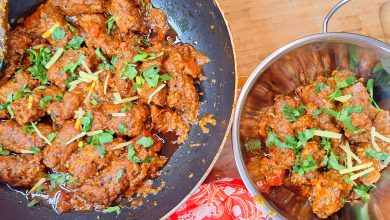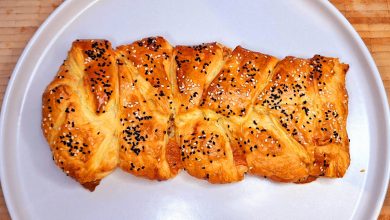Simple Namkeen Gosht Recipe: Easy, Authentic Peshawari Lamb Curry
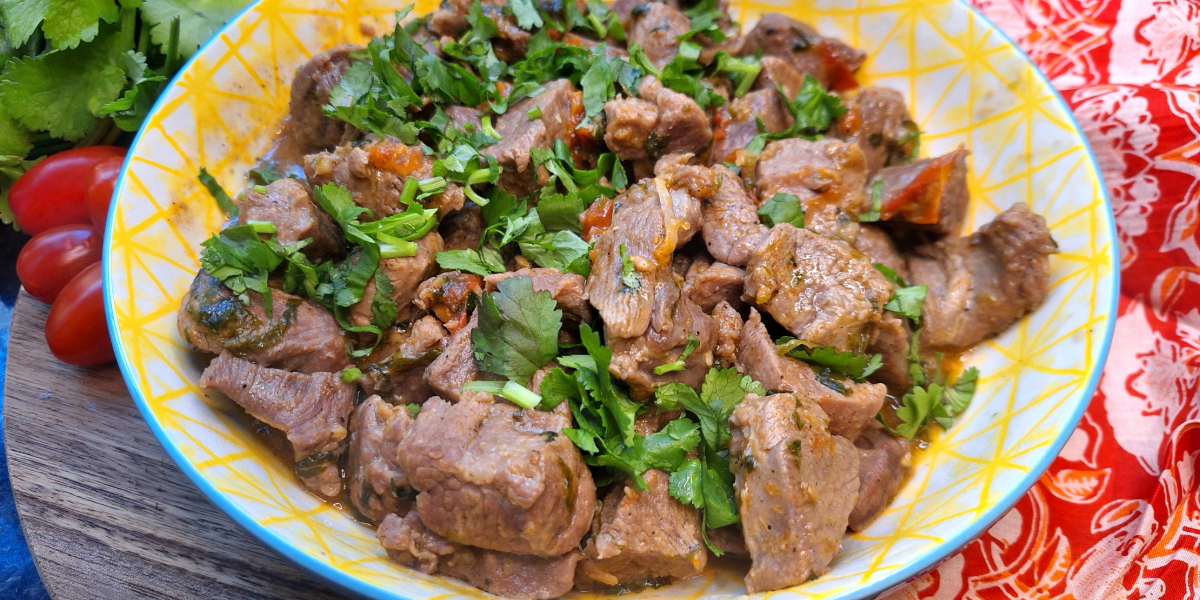
Introduction to this Namkeen Gosht Recipe
Namkeen Gosht or Peshawari lamb curry, is a popular Pakistani and North Indian dish known for its savoury flavour and tender meat. Namkeen Gosht has the most tantalising aroma, literally incomparable to any other Pakistani dish. When you smell this curry, you know something out of this world is in the making! My daughter who is obsessed with lamb, adores this lamb curry. The dish does not last long in our house, it’s incredibly moreish and the flavour is refreshing; therefore in keeping with classic Peshwari cuisine.
The meat used in Namkeen Gosht recipe, is typically lamb or goat. It is cooked until it becomes tender. This slow-cooking process allows the meat to absorb the flavours of the spices and develop a melt-in-your-mouth texture that is highly satisfying.
The addition of ingredients like tomatoes contributes to the umami richness of the dish. These ingredients add layers of flavour and help create the gravy that coats the meat beautifully.
While traditionally made with lamb or goat, with Namkeen Gosht recipe is very flexible and you could quite as easily cook it with beef or chicken instead of lamb or goat.
Peshwari Lamb Curry History
Namkeen Gosht, a savoury and aromatic Peshwari lamb curry, is a beloved dish from Peshawar, a city in northern Pakistan known for its rich culinary heritage. This dish reflects the simplicity and bold flavours of Peshawari cuisine, which emphasizes the use of fresh, high-quality ingredients and minimal spices to let the natural flavours shine.
Traditionally, Namkeen Gosht is made with tender pieces of lamb, slow-cooked with onions, garlic, ginger, and a handful of spices, resulting in a hearty and comforting meal. It’s a staple in Pakistani households, often enjoyed during family gatherings, festive occasions, or as a warming dish during colder months.
The dish’s name, “Namkeen,” meaning salty or savoury, highlights its simplicity and focus on the natural taste of the meat. By sharing the history and cultural significance of this dish, you can connect with readers who appreciate authentic, traditional recipes.
How I came across Peshawari Lamb curry
Lamb curry’s were always an exciting event in my house growing up. As a more expensive meat to purchase and for health reasons we would tend not to eat too much of red meat. So when we did, it really was an indulgent meal that we all enjoyed.
This Peshawari Lamb Curry was one of the first dishes I made as a newly wed. My aunt kindly passed on her recipe to me. This was a quick and easy recipe very much needed for the inexperienced cook that I was. I have to say I surprised myself at how tasty the lamb curry was, and it wasn’t the typical curry that required constant slaving over the hob. The aroma of this curry is tantalising, it will literally make your mouth water. And best of all, this dish makes it to the easy Pakistani Recipes list.
I do like to make this dish with boneless lamb, just because it’s lovely to have those pieces of lamb melt in your mouth without having to deal with any bones. I also find that boneless lamb is easier to trim by the butcher, so it will have less fat content, which again I prefer.
Another appeal of this Peshwari Lamb curry is not having to chop onions. I am terrible at chopping, especially when it comes to finely chopping onions (I always resort to my mini food processor whenever possible). So I adore that this dish requires minimal preparation work and only 4 simple steps to complete. Thus, a double win for me! You could serve this with pakoras, chaat and mango lassi to finish off an amazing meal!
Namkeen Gosht Variations
While the classic Namkeen Gosht recipe is a crowd-pleaser, there are several ways to customise it to suit different tastes and dietary preferences. For a richer flavour, you could try adding yogurt to the curry base, which adds a tangy twist and creamier texture. If you prefer a spicier version, increase the amount of green chilies or add a pinch of red chili powder. For those who don’t eat lamb, beef or goat meat can be used as excellent substitutes. Vegetarians can even adapt this dish by replacing the meat with potatoes or cauliflower, creating a hearty vegetarian curry. Another variation is to incorporate whole spices like bay leaves, cinnamon, or cardamom for a more complex flavour profile.
What to serve with Peshwari Lamb Curry
Namkeen Gosht is a versatile dish that pairs beautifully with a variety of sides and accompaniments. Serve it with steamed basmati rice or naan for a classic Pakistani meal. For a lighter option, pair it with roti or paratha, which are perfect for soaking up the flavourful gravy. To balance the richness of the curry, add a refreshing side like cucumber raita or a simple green salad. For a complete feast, consider serving it alongside other Pakistani favourites like daal (lentils) or vegetable sabzi. Garnish the dish with fresh coriander leaves or ginger strips for an extra burst of flavour and visual appeal. T
See my video on Instagram or TikTok to see how to make this dish!

Ingredients for Namkeen Gosht / Peshawari Lamb Curry
Feeds 4-5
Time: 7 minutes preparation, 1 hour cooking
- 1kg boneless lamb, in small pieces (you can use on the bone too)
- 3 tablespoons vegetable oil
- 1 1/2 teaspoons of garlic, finely chopped
- 1 1/2 teaspoons of ginger, finely chopped
- 1 teaspoon salt (to taste)
- 1/2 teaspoon ground black pepper
- 150ml water
- 2 fresh tomatoes, roughly chopped
- 3 green chillies, finely chopped (to taste)
- 4 tablespoons of fresh coriander finely chopped
Method for Namkeen Gosht
- First, add the oil to the pan and heat, turn the heat low and then add the salt, pepper, garlic and ginger. Stir through. Be careful that the garlic and ginger does not burn.

2. Secondly, add the lamb, stir through and brown most of the lamb before adding the water. This will take a few minutes. Next, cover the pan with the lid and cook on low heat for 45 minutes. Keep stirring the lamb in the pan at regular intervals, if the lamb is drying out, add splashes of water. You do not want it to stick or burn.

3. Thirdly add the chopped tomatoes, green chillies, and fresh coriander, stir through and cover the pan with the lid. You will need to cook the lamb for a further 10 minutes or until the lamb is tender.
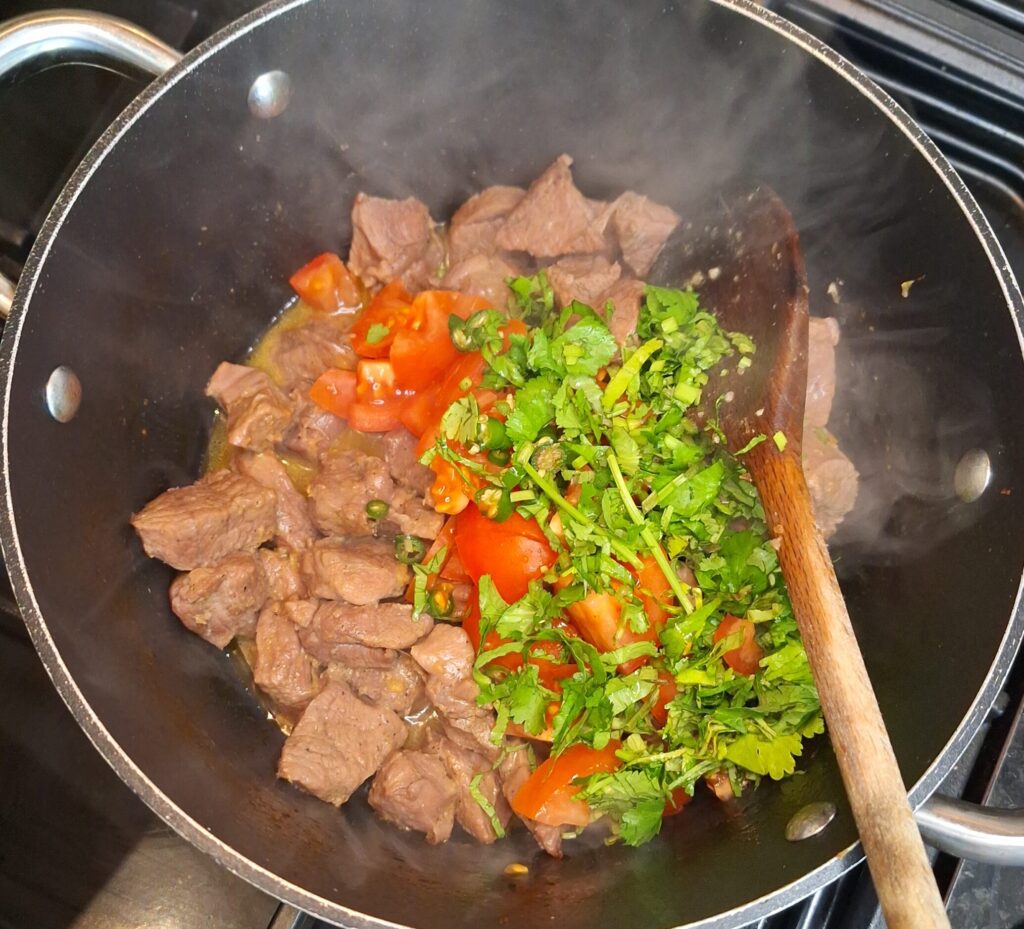
4. Finally, serve with fresh chapati’s or naan and enjoy!

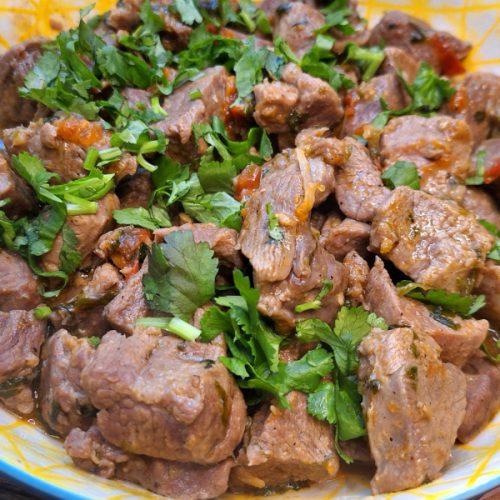
Simple Namkeen Gosht Peshawari Lamb Curry
Ingredients
- 1 kg boneless lamb, cut into small pieces you can use on the bone if you prefer
- 3 tbsp olive oil
- 1.5 tsp garlic, finely chopped
- 1.5 tsp ginger, finely chopped
- 1 tsp salt
- 0.5 tsp black pepper
- 150 ml water
- 2 tomatoes, roughly chopped
- 3 green chillies, finely chopped
- 4 tbsp fresh coriander, finely chopped
Instructions
- First, add the oil to the pan and heat, turn the heat low and then add the salt, pepper, garlic and ginger. Stir through. Be careful that the garlic and ginger does not burn.

- Secondly, add the lamb, stir through and brown most of the lamb before adding the water. This will take a few minutes. Next, cover the pan with the lid and cook on low heat for 45 minutes. Keep stirring the lamb in the pan at regular intervals, if the lamb is drying out, add splashes of water. You do not want it to stick or burn.
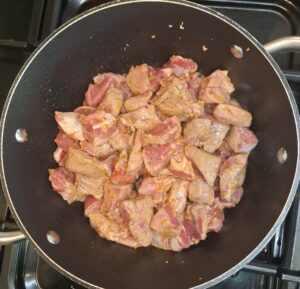
- Thirdly add the chopped tomatoes, green chillies, and fresh coriander, stir through and cover the pan with the lid. You will need to cook the lamb for a further 10 minutes or until the lamb is tender.
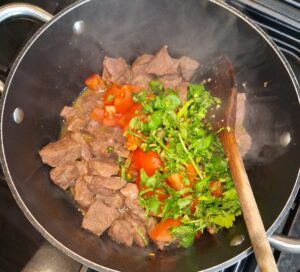
- Finally, serve with fresh chapati's or naan and enjoy!
